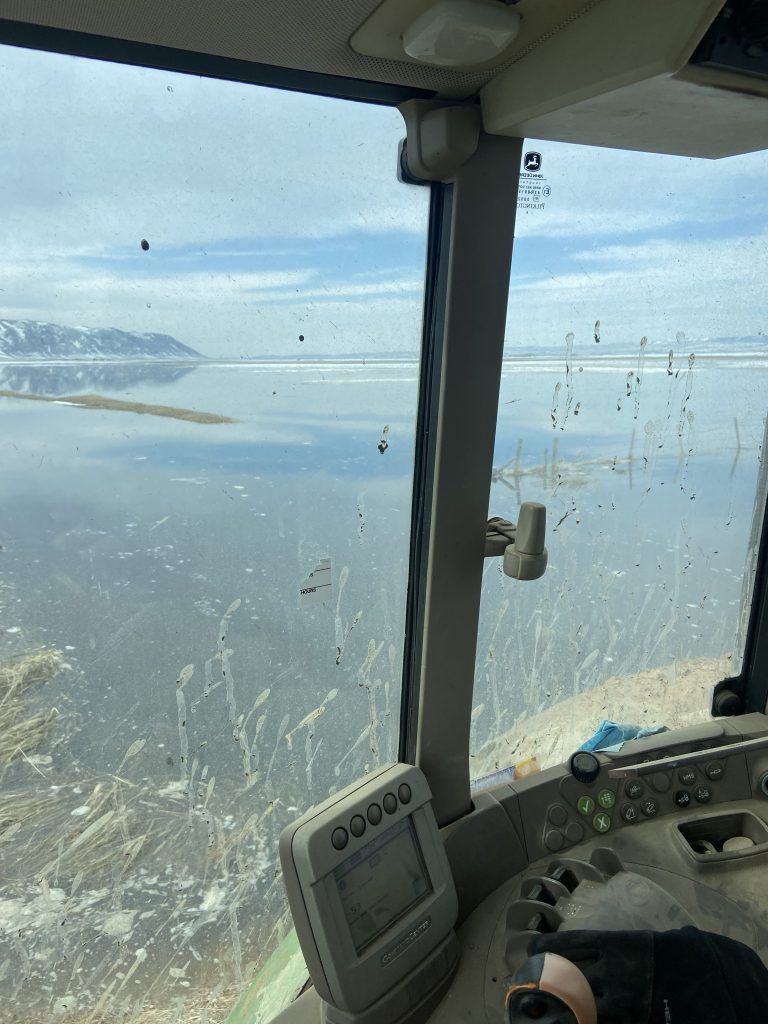Farmers and Ranchers Throughout Utah Impacted by Flooding & Consequences of Long Winter
Author
Published
5/10/2023
Farmers and ranchers in Utah are no stranger to dealing with adversities of weather -- typically in the forms of a lack of water. After a historic winter with heavy snow accumulation, the situation now is dealing with too much water, and the consequences continuing from that heavy winter.
Early "spring" conditions included prolonged snow cover on grazing ground in the west desert, where sheep ranchers were severely impacted. Constant rain and snow meant difficulty and delay in getting shearers to harvest wool from sheep in anticipation for spring lambing. The aforementioned snow covered ground meant ranchers had to find supplemental feed or additional grazing locations for their animals prior to moving to mountain pastures, and in some instances, clearing ground so lambs could be born.
For cattle ranchers, wet and cold conditions led to calving losses that in some instances were two or three times as severe as normal.
"This is stuff we've only heard about, but now we're living it," said Brandon Yardley, a rancher in Beaver County.
The cool spring had some concerned about delays in crops and produce, while others have taken an accepting attitude to the conditions.
"Mother nature will always catch up," said Brett Bunker, a farmer in Millard County. "We'll get through it. This is just this year's challenge."
As can be the case, in some areas of the state that are often neglected by precipitation, such as San Juan County, reservoirs are full and conditions have farmers feeling hopeful. While in others like Box Elder, Cache, and Rich Counties, widespread flooding is causing farmers to livestock deaths, lost crops, and lost opportunities.

Photo courtesy of UDAF
"We are certainly not here to complain about having water, it just has presented challenges," said Laura Holmgren of Box Elder County in an interview on KSL Newsradio.
The Utah Department of Agriculture and Food (UDAF) has received reports of extreme flooding in Rich County along the Bear River causing devastation for ranchers and their livestock.
“After many difficult years of drought and an extremely hard winter, these ranchers are now experiencing some of the worst flooding ever seen in Rich County,” said Craig Buttars, Commissioner for the Utah Department of Agriculture & Food. “Our department is working to do everything we can to help these ranchers and set up resources for others who may experience hardships due to flooding.”

Photo courtesy of UDAF
According to their press release, UDAF officials estimate that 20-30 ranches along the Bear River have been impacted by flooding. As a result of this emergency, cattle have been evacuated to avoid the rising waters. These ranchers are expected to incur additional feed costs of $18,000-$25,000 per ranch and transportation costs of $2,500-$5,000 to relocate cattle. Additional costs have been incurred to divert water and create high ground for cattle to stand on. Unfortunately, some cattle have been lost. UDAF has not yet determined the total number of cattle lost.
More information on additional resources is expected to come out following a special session of the Utah legislature.
Want more news on this topic? Farm Bureau members may subscribe for a free email news service, featuring the farm and rural topics that interest them most!
